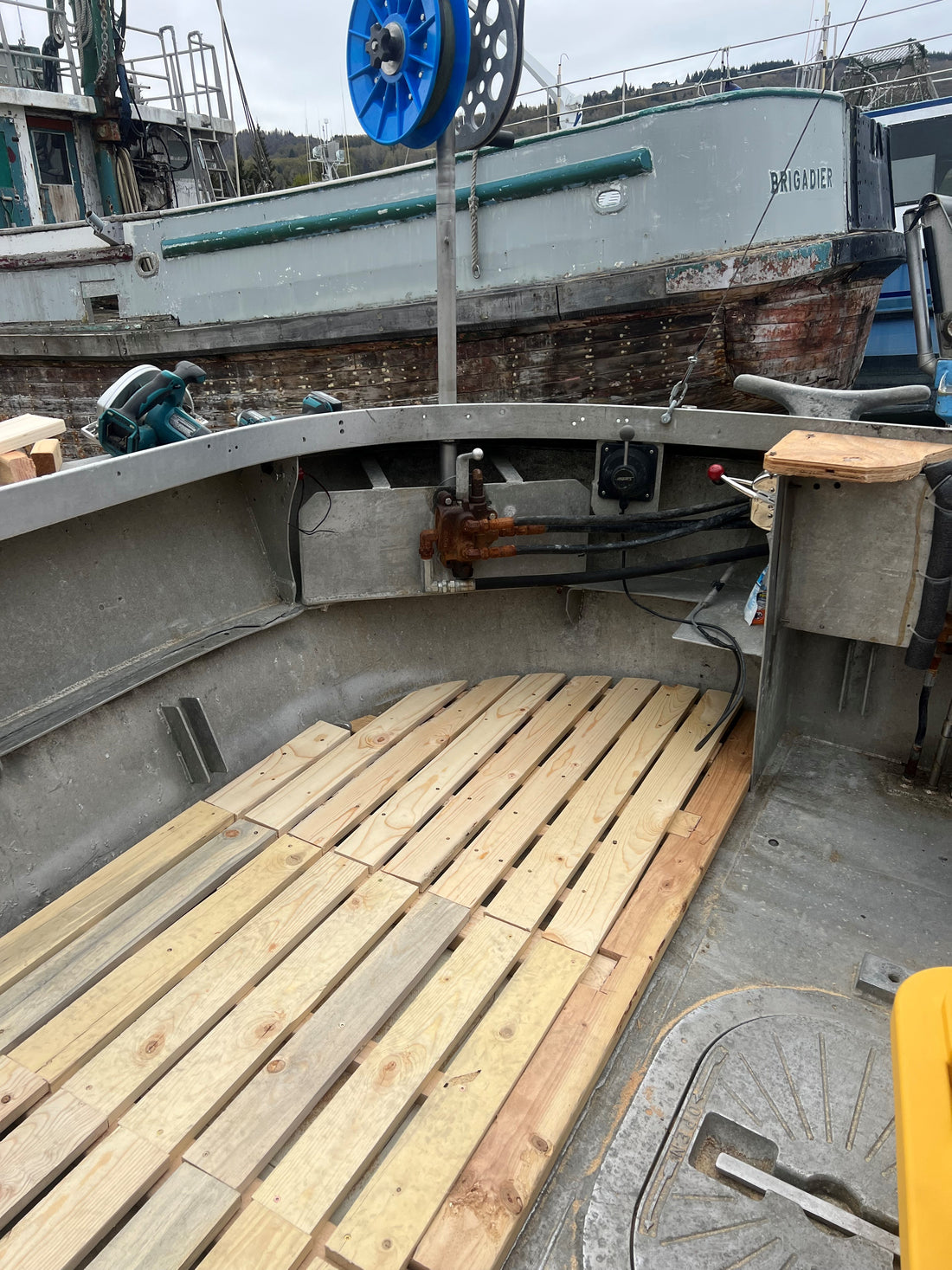Standing on a cold aluminum deck for hours at a time will suck the life our of you through the soles of your feet, so we decided to build a false deck to stand on. The jig machines are at the aft end of our boat, so we spend a lot of time standing there. A false deck, or deck boards, are pretty common on fishing boats in Alaska and most of the false decks I've seen are something like the one we are building.
The first step is to lay out the main board across the deck. This long board matches the width of the deck so it can't slide side to side, and it is laid behind the support for our aft controls on one end of the board and an aluminum rib of the deck rail on the other end so the board can't slide forward when the boat rocks. When the deck is finished the deck won't slide aft because of the deck rail, so the whole thing should be locked in place.
The deck boards will be built in three sections, each removable for cleaning and to allow access to the aft lazarette (with the white hatch), so rather than screw the sections of deck to the long board, the shorter boards are notched into the long board.

The main board lays on the deck and could collect water, so we cut scuppers into the bottom of the board.

The next step is to add deck boards. We are using untreated 1x4 pine deck boards and untreated 2x4s beneath the deck boards. This deck won't last forever, but it should give us a few years of service We started with the middle boards because they have square cuts on both ends making them the easiest boards to cut.

Every other deck board, like almost every board on a boat, has to be custom cut because there aren't many straight surfaces on a boat. These deck boards are cut to fit the curved edge of the rail on the deck.
First you sketch the curve of the deck rail on the board. Each location has a slightly different curve.

Next you make the cut. We've had a lot of experience making curved cuts with a circular saw designed to make straight cuts.

If you're accurate sketching, careful cutting and not too particular about the fit, your custom-cut board fits into place with the others.

The finished false deck is locked into place by the main board on one edge and by the deck rails on the other sides. When we encounter rough seas we will find out if it will stay in place.


